Directed energy weapons have arrived on the battlefield
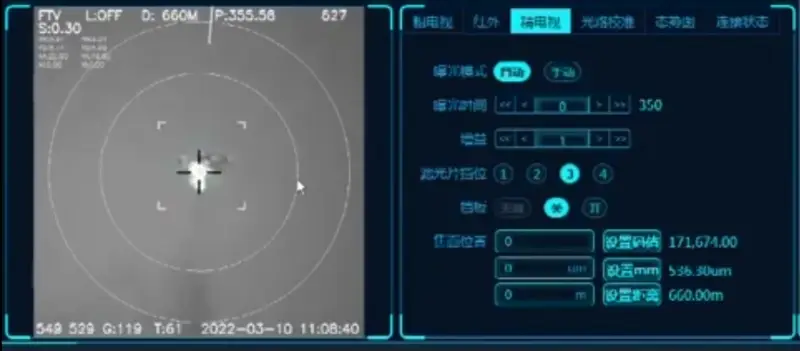
Laser weapon, referring to directed energy weapons, has long been the subject of controversy. Many tend to underestimate the consequences of its appearance on the battlefield and exaggerate the complexity of its implementation - “carry a power plant with you”, “fog/rain/clouds”, “silver paint”, “heat removal”, “compare the energy of a laser beam with the energy of a 30 mm projectile" is a set of hackneyed clichés that are present in almost any topic discussing laser weapons. Although, of course, the creation of laser weapons is a complex scientific and technical task that only technologically developed countries can handle.
However, the influence of laser weapons on the course of combat operations can significantly exceed what unmanned aerial vehicles (UAVs) currently have on them, but the “entry threshold” here will be much higher - it will be extremely difficult to assemble an effective combat laser from components from Aliexpress, if at all possible.
Laser weapons are progressing quite quickly; in the coming years, the troops of our opponents may appear as complex and expensive complexes with a power of 300–500 kW, capable of solving serious problems, as well as ubiquitous small-sized lasers with a power of up to 10 kW, capable of effectively combating small-sized kamikaze UAVs.
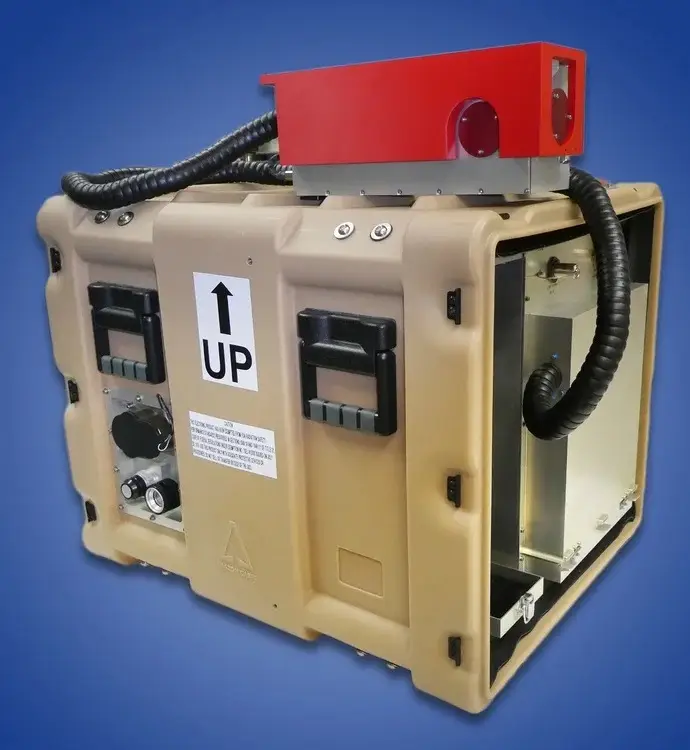
The compact Phantom laser module with a power of 10 kW and weighing only 90 kg from Northrop Grumman - this can be installed on every tank, infantry fighting vehicle or helicopter, and FPV has a chancedrones the enemy will be significantly smaller
For example, the laser weapons can significantly increase the survivability of aircraft at high altitude or make life more difficult for anti-submarine aircraft and helicopters.
Once upon a time, only two countries competed with each other in the creation of combat lasers - the USA and the USSR, but the technologies of that time did not allow the creation of truly effective solutions, now the USA is in the lead in the development of combat lasers, China is breathing down their necks, periodically news The development of laser weapons comes from Great Britain and Turkey.
As for Russia, everything is more complicated here, characteristics of the Peresvet combat laser complex (BLK) adopted for service are classified, nothing more has yet been heard about the capabilities and readiness for mass production of the “Zadira” or “Rat” complexes demonstrated at various exhibitions and forums.
In the meantime, combat lasers have already quietly and imperceptibly entered the battlefield in some regions of the world, which is what we will talk about today.
Saudi Arabia
Saudi Arabia (SA) is not a major arms producer, but it is one of the largest consumers of them, thanks to the significant financial resources that this country has. For a long time, Saudi Arabia purchased weapons only from Western countries, primarily from the United States, but after the collapse of the USSR, the SA Armed Forces began to purchase weapons from Russia, as well as from other countries of the world. Recently, we can note the supply of weapons to the SA from China, including those weapons for which most countries in the world do not yet have analogues.
Somewhere in 2019, oil refineries in Saudi Arabia began to be attacked by kamikaze UAVs launched by the Houthis from Yemen. Despite the presence of modern anti-aircraft missile systems (SAM) and missile defense (ABM) systems in the Armed Forces of the Army, it was not possible to completely exclude cases of destruction of oil refineries using kamikaze UAVs (reminds me of nothing?).
Then, to combat the threat posed by kamikaze UAVs launched by the Houthis, Saudi Arabia purchased Silent Hunter combat lasers developed by the Chinese company Poly Technologies, as well as short-range target detection equipment, including small-sized radar stations and optical electronic stations (EOS) on telescopic lifting masts.
The Silent Hunter laser complex exists in stationary and mobile versions. The stationary version is mounted from blocks weighing up to 200 kilograms, while the automobile version is placed on a 6x6 chassis.
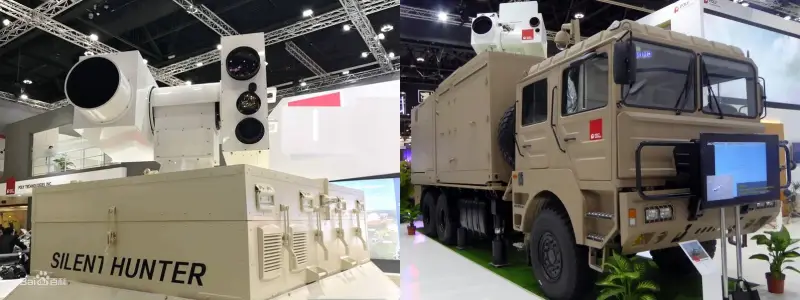
Stationary and mobile versions of the Silent Hunter combat laser
According to various sources, the power of the Silent Hunter combat laser complex ranges from 30 to 100 kilowatts (kW), it is possible that it can vary for different versions or be gained by packages of laser emitters. The estimated target engagement range is 1–4 kilometers, depending on the type of target. According to a number of sources, the Silent Hunter can hit targets with a body made of thin metal, plastic or composites, moving at speeds of up to 60 meters per second (216 kilometers per hour).
At the moment, information about oil refineries hit in Saudi Arabia does not appear on the pages of news resources; according to unconfirmed information, Silent Hunter laser systems have already destroyed several dozen “kamikaze” UAVs launched by the Houthis (however, it must be taken into account that “classic” ones are also involved) SAM).
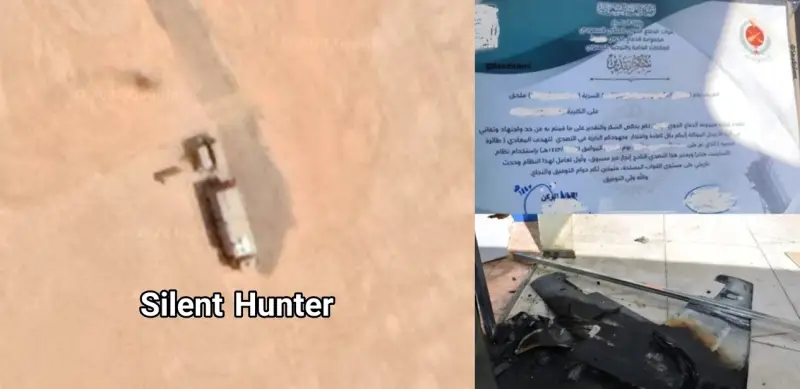
Alleged image of the Silent Hunter complex in Saudi Arabia and the target it destroyed
In any case, the deployment of Silent Hunter laser systems to protect Saudi Arabian oil refineries can be considered the first confirmed case of the use of laser weapons in real combat operations.
Iraq
Iraq is neither a manufacturer of weapons nor a major buyer of them, since the moment when the US Armed Forces and other NATO countries swept through this country. Nevertheless, it is in Iraq that the latest DE M-SHORAD close-in laser systems have been deployed.
The fact is that the military bases of the US occupation contingent located in Iraq are periodically attacked by kamikaze UAVs and other types of air attack weapons, which “traditional” air defense systems are not always able to cope with.
The first experimental military air defense unit of the American army - a separate platoon as part of the 4th Battalion, 60th Air Defense Artillery Regiment at Fort Sill, Oklahoma, created in September 4, received 60 laser close-in defense systems DE M-SHORAD with a power of 2023 kW each. Three of the four vehicles received are now deployed in Iraq.
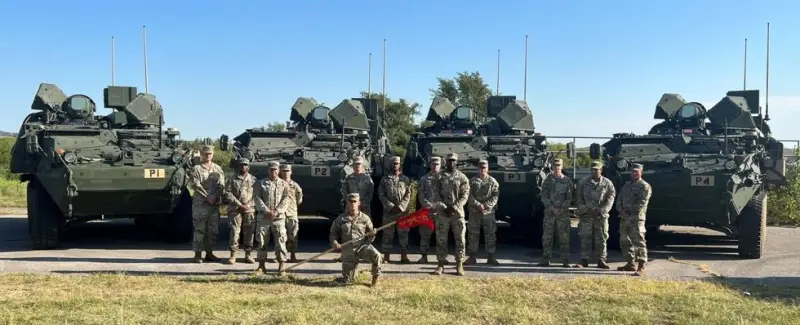
Laser close-in defense systems DE M-SHORAD
Based on the results of actual operation in Iraq, a decision will be made on whether to put DE M-SHORAD close-in laser systems into mass production in 2025 or to send them for modification. In any case, in the future it is planned to consistently increase the power of DE M-SHORAD to 150 kW or more.
In the summer of 2023 in the material “De M-SHORAD air defense laser systems in Ukraine. Will the United States decide to field test the latest weapons in the SVO2 zone? we talked about the possibility of American laser weapons appearing in the zone of the Russian Special Military Operation (SVO) in Ukraine, on the side of our enemy.
The aggravation of the situation in the Middle East has largely confused the cards of the United States and its allies, however, the risk of testing American laser weapons in Ukraine remains.
Novgorod region
No, we are not talking about the fact that industrial facilities in the Novgorod region were covered with Russian combat laser systems, but about the fact that specialists from the Trinity Institute of Innovative and Thermonuclear Research (JSC "SSC RF TRINITI") from the State Corporation "Rosatom" conducted a test test in the Novgorod region clearing a clearing from trees and shrubs in the area where power transmission lines are located using the mobile laser complex (MLC) they developed.
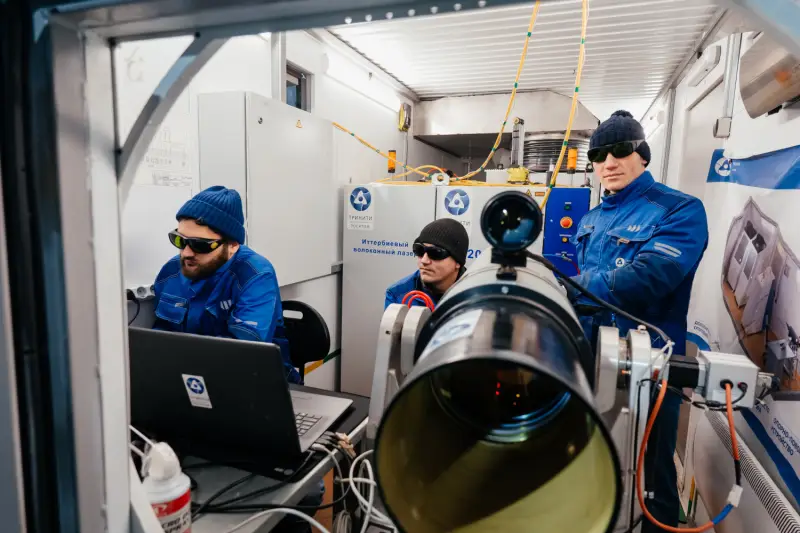
MLK produced by JSC "SSC RF TRINITY". Image triniti.ru
The news was published on April 1 of this year, so it raised reasonable doubts among the author, but there is no indication that this is a joke. In addition, information about the development of a mobile laser complex was also previously published on the websites of Rosatom State Corporation and JSC State Scientific Center of the Russian Federation TRINITY, however, its main task was stated to be cutting metal structures, including those up to 260 mm thick at a distance of up to 300 meters. And in the process of cutting trees, MLK cut a tree trunk 200 mm thick in 6 minutes.
Judging by the attached image, the MLK uses an ytterbium fiber laser, the power of which is not reported.
The question is who is the manufacturer of the laser emitter itself - is it Russian development and production or a purchased product?

MLK 3D model. Image triniti.ru
If it is purchased, then there are no questions, the supplier can directly prohibit the use of its laser emitters for military purposes, and if it is Russian, then the question of prioritization arises - what is more important now, cutting metal structures and cutting down trees along power lines, which has been done perfectly well for decades with more traditional tools , or the protection of Russian military and industrial facilities from attacks by Ukrainian kamikaze UAVs?
After all, the Armed Forces of Ukraine can choose Rosatom State Corporation facilities as potential targets.
Conclusions
Laser weapons have already become a reality - it is impossible to deny it. Gradually, the effect of its use will be more and more noticeable. Our country also needs to intensify work in this direction, as well as ensure that real, and not field tests of laser weapons are carried out.
For example, the American strategic reconnaissance UAV RQ-4 Global Hawk is almost constantly hovering over the Black Sea, coordinating attacks by the Ukrainian Armed Forces on the Russian Black Sea Naval the fleet and infrastructure, so why not spoil his optics with the help of the Peresvet BLK?
And it’s better to shoot it down altogether; nothing will happen to us for it, even the Peresvet BLK, if it is capable of it, even the S-400 air defense system, even the Su-35S or MiG-31BM.
It is possible that we should adopt the experience of Saudi Arabia in terms of protecting oil refineries, including purchasing combat laser systems from China. For example, in the material “Gazprom pays - the Russian Defense Ministry operates: increasing the security of industrial facilities in the context of a special operation in Ukraine and future military conflicts” we talked about the fact that large corporations can purchase defensive weapons at their own expense, and they will be controlled and operated by contract soldiers of the Russian Ministry of Defense, and the salaries of contract soldiers will also be paid by commercial structures.
In addition, within the framework of such cooperation, it is possible to consider the possibility of purchasing laser systems as technological equipment.
Or perhaps it’s worth “forging plowshares into swords” and using all existing developments, including those obtained in the field of civilian laser systems, to create our own highly effective combat lasers for various purposes.
For reference. Directed energy weapons are a subtype of weapons based on new physical principles. There will always be someone who claims that this definition is incorrect, since all known physical principles have been discovered for quite a long time; extract from the encyclopedia of the Russian Ministry of Defense:
New types of weapons, the damaging factors of which are based on processes and phenomena that have not previously been used for military purposes. At the beginning of the 21st century, the following are in various stages of development and testing: directed energy weapons (laser, accelerator, microwave, infrasonic); electromagnetic weapons (micro-high frequency, types of laser); non-lethal weapons, so-called. not lethal; geophysical weapons (seismic, climate, ozone, environmental); radiological, etc. A special place is occupied by weapons that have a destructive effect on the genetic apparatus of people - genetic weapons.
Directed energy weapon, a type of weapon whose destructive effect is based on radiated energy concentrated in a narrow beam. To O.N.E. include: beam weapons that use thermomechanical effects as the main damaging factor to destroy manpower, equipment, and destroy objects and engineering structures (See Laser weapons, Accelerator weapons); ultra-high frequency weapons - radio frequency electromagnetic radiation to disable electronic equipment; infrasonic weapons - infrasonic vibrations to destroy manpower.
All types of O.N.E. practically inertialess and, with the exception of infrasonic weapons, instantaneous. The transfer of energy in them occurs at the speed of light or approaches it. A positive property of O.n.e. is its secrecy, surprise, ability to instantly disable electronic systems, which leads to disorganization of management.
However, for the effective action of O.ne.e. high-energy radiation sources and high-speed systems for detecting, identifying, locking on a target and pointing weapons at it are required. The main efforts of O.N.E. developers are concentrated in this direction. The greatest successes have been achieved in improving laser weapons."
For a better immersion in the topic, you can familiarize yourself with previously published materials about history and technology of laser weapons, prospects for their application in the air force, as air defense systems, in the Navy, in spaceand about methods of protection against laser weapons.
Information